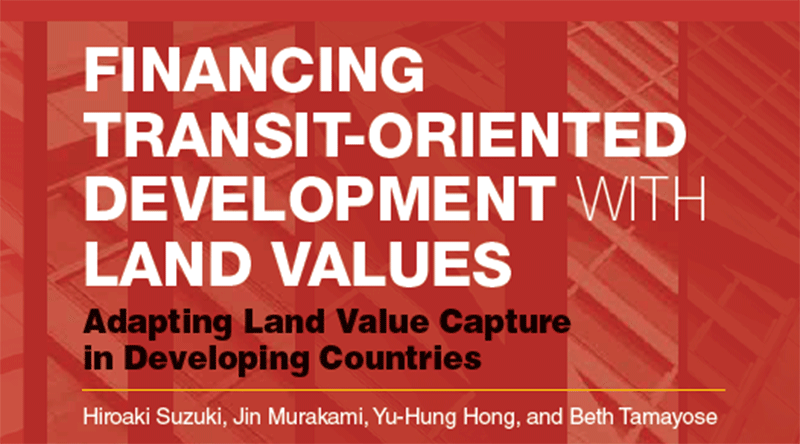Financing Transit-Oriented Development with Land Values. (2015)
Hiroaki Suzuki, Jin Murakami, Yu-Hung Hong, and Beth Tamayose. The World Bank Group
The World Bank has recently published a global scan of land value capture (LVC) techniques geared toward informing development in developing countries, but also with practical application for those in the US. This work provides a good overview of several methods that local governments and public transportation agencies can use to share in the financial benefits realized through private investments spurred by public improvements, such as transportation improvements.
Partnering with private developers is one way that communities and transit agencies can share the financial rewards that can result from TOD. Some techniques discussed are well-known in the US, such as special assessments, tax increment financing, and joint development. Others, mostly development-based techniques, are less common in the US, but could provide new ways of sharing the rewards gained through TOD. One such example is urban redevelopment schemes that are popular in Japan where local land owners work with a developer to form a cooperative to develop a single large project. Making changes to the local zoning regulations, local governments and public entities profit from the sale of newly gained space.
Following a thorough examination of several LVC techniques, the authors use case study examples from around the world to demonstrate their use. Two US examples are highlighted, New York City and Washington DC. The profiles from other world cities may provide inspiration to consider other ways to finance TOD.

